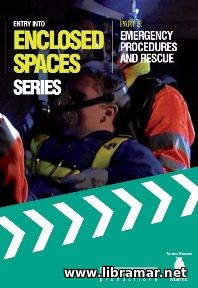 This booklet presents the fifth part of the Entry Into Enclosed Spaces series developed by Videotel in collaboration with Mines Rescue Marine. This particular volume is highlighting the emergency and rescue procedures that shall be considered prior to commencement of any task where the entry into confines space is involved. The volume opens with overview of the rescue techniques and instructions for preparation to the rescue operations.
Then the main content of the document is dealing with the equipment used during rescue operations, responding to the emergencies, attending to the casualties, rescue exercises and other issues. Again, there are several control questions with correct answers included for tracking training progress and appendix with additional information. Use the booklet with the accompanying training video.
The previous four parts cover Awareness, Preparation and Procedures, and Equipment, and Enclosed Space Entry. In short, all parts of this training series is highly recommended to all people working on board any vessel or offshore installation, with no exceptions, as well as to the people intending to start working at sea and willing to do their work safely.
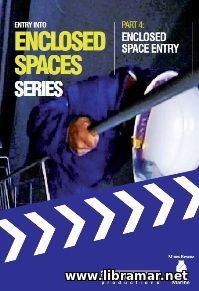 The training booklet of the fourth part of the popular Entry Into Enclosed Spaces training series considered best practice in the shipping industry. It is very important that the procedures established by the company for entry into enclosed spaces are followed at all times and by all people on board ship. Everyone shall understand the hazards associated with entering enclosed spaces and working there.
Therefore the training shall be provided to all people on board on a monthly basis in order to minimize the possibility of any incidents. The booklet starts with the general overview of the enclosed spaces, which is followed by the instructions on the so-called "on the spot" risk assessment to be performed prior to entering into such space. The next three sections are providing all necessary information and practical tips on the safe entry into confines spaces, dealing with the emergencies and leaving the spaces.
Traditionally, the volume includes a number of questions for tracking your training process, supplemented with the correct answers for re-checking. Some additional information is there in the appendix. Note that the booklet goes together with this training video. The previous parts cover Awareness, Preparation and Procedures, and Equipment.
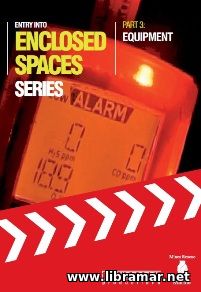 This is the part three of the training series on the entry into enclosed spaces, commenced with the parts devoted to the Awareness and Preparation and Procedures. Same as with the previous parts, this one is supplemented with the training video. The booklet tells the trainees about the equipment. The content of the booklet opens with the information about the equipment overview followed by the personal protective equipment and its proper use.
The next section is dealing with the atmosphere testing equipment and EEBD, standing for the emergency escape breathing devices commonly used on board ships and offshore installations. The rest of the book addresses the lighting and communication equipment, equipment used for rescuing people, and inspection and periodic maintenance techniques.
There are several assessment questions included in the book to track your progress and all of them are provided with correct answers. We know that entering confined spaces may be hazardous and this is the reason why it shall always be approached very rigorously, i.e. with proper preparation following correct established procedures, and using all required equipment including PPE mentioned above.
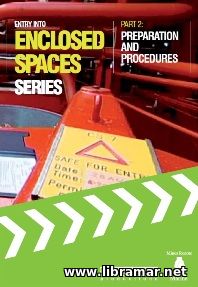 This is a second part of the training course commenced with the training booklet and video addressing Awareness. The training course is presented by world famous Videotel training provider. This second part is dealing with the Preparation and Procedures - the booklet is covering such important aspects as overview of the applicable procedures, assessment of the risks involved, action plan to be prepared and followed, PTW, standing for the permits to work, summary of the procedures that are required, etc. Some additional information is in the appendixes.
Note that there are numerous assessment questions provided with the answers. In addition, there is a training video supplementing the booklet. All other parts of the training series are also available at Libramar. The present course has been well met by the industry and is considered one of the best available today, it is highly recommended to all people working on board and caring about their safety since the content is expected to enable them to recognize enclosed spaces and all hazards associated with entering them, understand the importance of following procedures, rescue techniques to be used in case of emergency etc.
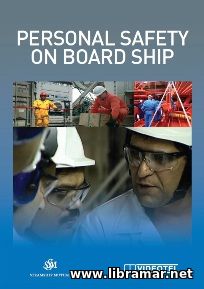 The present booklet is one of the items forming one of the best training programs on personal safety on board ships. Accompanied with the several training videos, it will provide trainees with virtually all information they shall know in order to ensure their own safety when working on a ship. The videos address the personal safety in the accommodation and in the galley, in the engine room and on deck, and also cover specific safety issues on bulk carriers and container vessels, tankers, chemical tankers and general cargo ships.
The shipboard accidents that commonly result in personal injuries cause pain to the humans and seriously disrupt the team for the period during which the injured team member will be recovering. They also lead to the additional costs incurred to the ship owners and operators, causing delays in operations.
Most of the incidents and accidents occurring at sea are directly or indirectly caused by human errors, such as the unsafe act or unsafe working conditions, or their combination. The idea of the developers of this training course is to raise the awareness of the crew members and all other people on board plus shore support personnel on the safety matters promoting the human safety on board every ship and in every compartment.
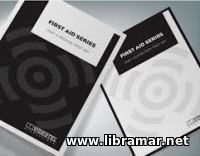 This training set consists of two workbooks supplementing the associated videos First Aid Series Parts 1&2. It is the intention of the authors of this package to provide trainees with required assistance in getting proper knowledge of the first aid; note, however, that first aid also necessitates some practice and knowing only theory will not be enough. In fact, the content of this training program supplements the training required by STCW Convention.
Two booklets cover the elementary and medical first aid. Working on board ships can be very hazardous occupation; even if good safety procedures are established and implemented and even if all crew members are well trained, the illnesses and accidents may occur at any time. And it is obvious that in such cases the life of a person who suffered an illness or injury will mainly depend on the medical help provided in an emergency.
This is where due knowledge and practice of the first aid can mean the difference between human life and death. In the present workbooks the first aid is described - it contains information about everything the seafarers shall be aware of to be able to provide necessary assistance. The trainees will get a chance to familiarize themselves with managing emergency situations, resuscitation, AED, shock and choking and in fact every single aspect of providing first aid on board...
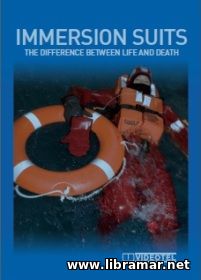 The training booklet on the immersion suits. The authors of the document have provided detailed and easily understandable explanation of the importance of having all crew members duly trained in using immersion suits, when the suits shall be used, what are the main types of the suits and what their working principle is, when and how immersion suits shall be put on.
The content of the booklet also tells readers about using immersion suits in an emergency and provides the information and instructions on their storage and periodical maintenance. The publication also contains excerpts from the relevant regulatory documents and real life case studies of evacuations where people could not survive due to the lack of immersion suits or because of the poor training.
The main difference between lifejackets and immersion suits is that while lifejackets can only provide you with some buoyancy, immersion suits will help to save your life in cold water since they are originally designed to provide protection against the elements. The cover the whole human body except the face and don't let sea water in. They are commonly made of synthetic materials keeping the human body warm. We would also recommend you to watch the associated training video.
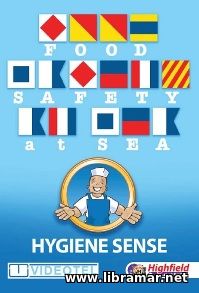 We all know that there are so many hazards on board any vessel at sea; however, some of them are quite easy to avoid - these are the hazards of food poisoning. The provision of the crew members with safe food is considered one of the essential components that shall be in place to ensure that the people remain healthy; this, in turn, will eventually result in safe and efficient running of the vessel.
For the passenger ships like ferries and cruise ships, the food quality on board can become one of the reasons for the passengers to choose particular company's ships. Any person on board may be affected by the contamination of the food which is the result of poor food safety control measures. the consequences may be truly disastrous for both people and the company.
The present training booklet is accompanying an excellent video programme emphasizing the established good practices to be maintained on board any ship to ensure the well being of the crew members, passengers and visitors. This information will be useful not only to the crew members engaged in preparation/serving of the food but also to the senior management of the vessel who shall be fully aware of the associated hazards and be familiar with and follow the procedures to avoid them.
« 1 2 ... 4 5 6 7 8 ... 10 11 » |







